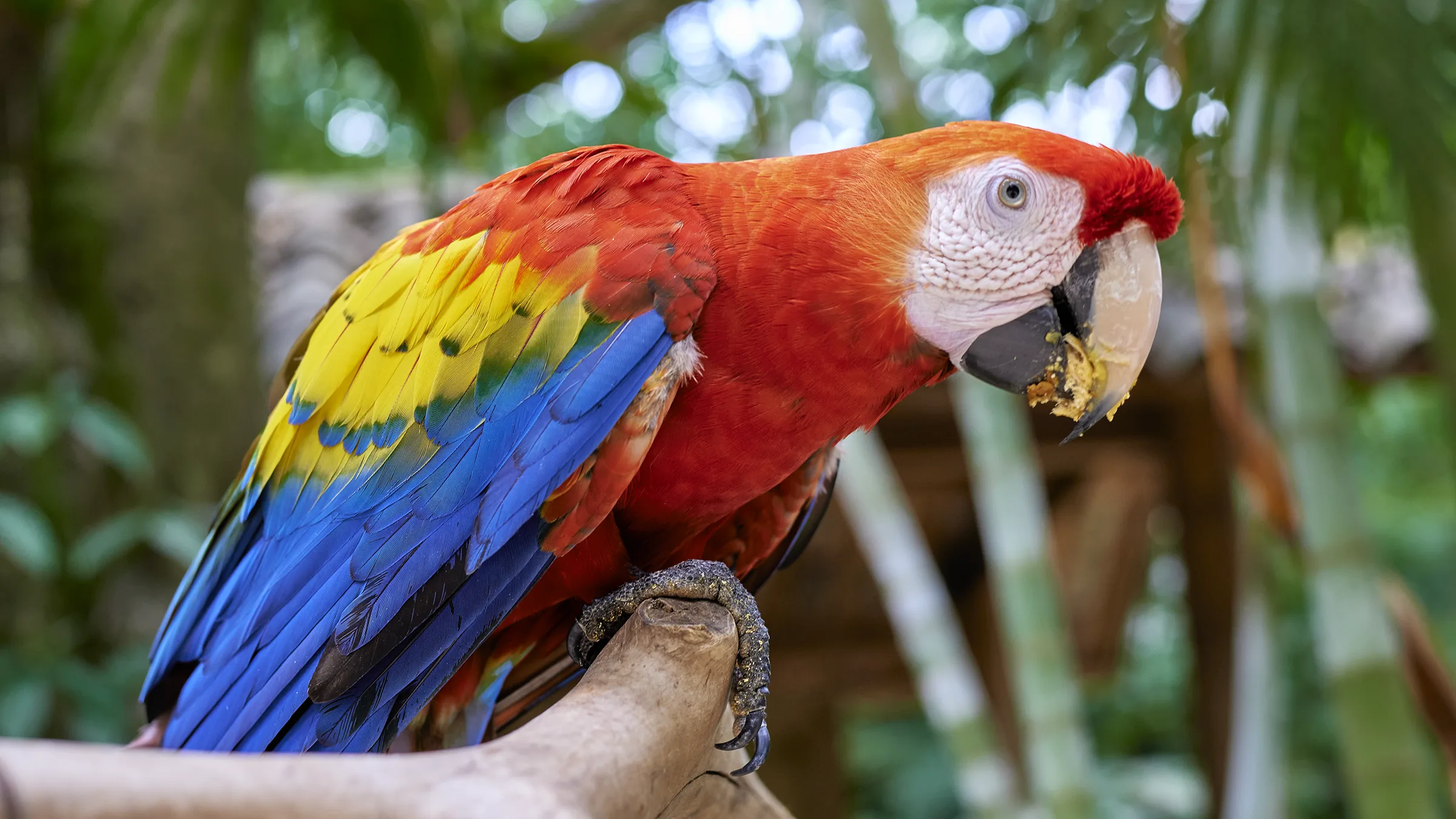The Red Guara or Red Macaw – National Bird of Honduras

The Scarlet Guara or Scarlet Macaw ( Ara Macao ) is native to Honduras, mainly from La Mosquitia and thanks to a conservation project it can be found flying freely in the Copán Ruinas archaeological park, now declared the Sacred Valley of the Scarlet Macaw .
Its habitat extends from southeastern Mexico to the jungles of Cochabamba in Bolivia , it prefers moist tropical forests near abundant water sources.
In Honduras there are two species of Macaws: the Guara Roja (Ara Macao) and the Guara Verde (Ara Ambigüa), and other species have recently been introduced.
It is popular as a domestic bird for its sociable behavior and because it learns to imitate words. It was revered by the Mayan and Aztec civilizations and even the Inca empire in Peru, for the beauty of its plumage.

Honduran National Bird Day
The Guara Roja or Scarlet Macaw was declared the National Bird of Honduras on June 28, 1993 by the National Congress of Honduras, as a measure to preserve the fauna and biological diversity that Honduras has.
That same day, the White – tailed Deer was named the National Mammal of Honduras.
Other names of the Macaw
The Guara or Guacamaya, in addition to being known as guaras, are also known as parrots.
It is also often called Central American red macaw, flag macaw, red macaw or red macaw.
The name Guacamaya comes from the Tupi languages of Brazil, where the word Ara means ‘strong’ and Macao precisely means ‘macaw’.
In the Mayan language it receives the names of oop, x-op, ah-k’ota and moo (the latter particularly in Quekchí), in Quiché caquix and in Tzeltal xcchc pan or xoua can mut.
Some common names in Spanish with which it is called in Latin America, and particularly in South America, are macaw seven colors, arará, macaw flag, scarlet macaw and red and yellow macaw.
Characteristics of the Guara or Red Macaw
The Red Guara belongs to the Psittacidae family and was classified in 1798 by the Swedish Linnaeus as Psittacus macao , its scientific name is Ara Macao, it is a bird with beautiful red, yellow and blue plumage.
Their diet is based on nectar, roots, fruits, nuts and cereals.
The Macaw has all the characteristics of a common parrot, with the singularity of having very lively colors in its plumage such as yellow, red and blue; it has a very long and attractive tail; Its natural habitat is very jungle areas.
The wings, long and pointed, have a wide yellow stripe that is formed by the greater and median wing coverts (in some specimens a part of this area has green shades). The t-shirts are dark blue and the lower coverts of the back, the rump and the upper and lower part of the tail are light blue.
The tail, which is somewhat longer than the body, is scarlet, with blue tints at the tips of the central feathers, while the outer feathers are almost entirely blue. The underside of the wings and tail are orange-red and brown.
The importance of the Guara Roja in the Mayan culture
The large area of bare, whitish skin on the face is criss-crossed with tiny lines of reddish feathers, barely visible from afar.
The beak is large, robust and hooked, with an off-white upper jaw (spotted black in the lower corner) and a black lower jaw. The eyes are round, with pale yellow to greenish irises and are located very laterally on both sides of the head.
Dark gray legs and 4 toes; 2 forward and 2 backward, which facilitate its movement between the branches of the trees and serve to hold its food.
Sexual dimorphism: The females are somewhat smaller, with a thicker, curved and shorter bill. Young specimens have a greyish lower jaw, brown irises and a slightly shorter tail.
They mate for life after 4 years. The female lays 2 to 4 white eggs in a tree cavity, which they hatch for 24 to 25 days. They raise the chicks for 105 days. At one year of age they separate from their parents. Its longevity is approximately 30 years, it measures between 81 and 96 cm long, and weighs around 1 kg.
Scientific classification
- Kingdom: Animalia
- Edge: Chordata
- Class: Birds
- Order: Psittaciformes
- Family: Psittacidae
- Genre: Ara
- Species: macaw
binomial name
- ara macao
- Linnaeus 1758
Traditional legend about the Guara Roja of the Honduran Mosquitia
“A long time ago, there was a good god named Mapapak, who protected the Sumo Indian tribe. One night the moon was not as usual. It got darker and darker because the evil god called Wasalá moved the earth near the moon.
Suddenly, the moon turned red with the help of the sun. The sumos knew it was a fight between good and evil. They felt in danger because they knew that eclipses could leave the tribe in ruin… So they left their houses and gathered in the jungle on the banks of the river.
Suddenly the spirit of evil appeared, seeing him they began to make noises and bonfires to scare him away. Mapapak sent a brave messenger who was shaped like a bird with a thick beak and feathers of bright colors, green blue and yellow. This warrior of good defeated the spirit of evil, but in the fight he got hurt. Since that day, the macaw also has red in its feathers. It is the red guara, the national bird of Honduras.
Bibliography
- Macaw Mountain Bird Park and Nature Reserve
- Collins Spanish Dictionary – Complete and Unabridged 8th Edition 2005 © William Collins Sons & Co. Ltd. 1971, 1988 © HarperCollins Publishers 1992, 1993, 1996, 1997, 2000, 2003, 2005
- Honduran Association of Ornithology (ASHO)
- The scarlet macaw wants to reign in Honduras and repopulate Central America


